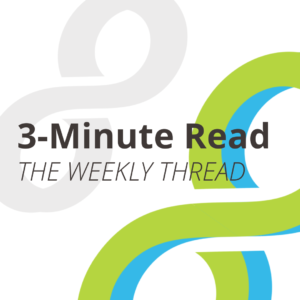Streamlining Contracting: Pros and Cons of Template Agreements
Sept. 10, 2024 —Time is money (according to Ben Franklin), so the idea of using template agreements to speed sponsored research contracting is tantalizing. Some research organizations have looked to templates as a shortcut to getting to an agreement, but can templates really help expedite the research contracting process?
—Time is money (according to Ben Franklin), so the idea of using template agreements to speed sponsored research contracting is tantalizing. Some research organizations have looked to templates as a shortcut to getting to an agreement, but can templates really help expedite the research contracting process?
Template pluses and minuses
Template agreements, also known as model agreements, aim to remove uncertainty from the contracting process by laying out basic terms and conditions related to intellectual property, confidentiality, and/or funding. These agreements are often general and can be edited by either party to more specifically meet the needs of the collaboration. Ideally, using template agreements enables parties to avoid the lengthy process of negotiating every detail from scratch, which can help reduce partners’ time investments and help get projects off the ground quicker.
However, template agreements can be short on flexibility and may fail to account for unique needs or circumstances that almost always exist. If a template agreement needs significant modifications to address these gaps, any potential time savings is lost. Relying too heavily on one partner’s template agreements can also be perceived as rigidity and impede the collaborative spirit that helps projects succeed. Template agreements can serve as helpful starting points for the contracting process but can’t be viewed as the right solution every time.
Agreement applications
One notable effort to broaden the use of template agreements is the Lambert Toolkit, published by the U.K. government in 2005. The toolkit provides seven one-to-one research collaboration agreements, four consortium agreements, and additional resources to enable organizations to choose the right agreement for their collaboration. Lambert toolkit agreements are non-sector-specific and intended to be used only as starting points to create semi-custom contracts that meet the collaborators’ needs. However, a review of the agreements from 2013 found that only 3% of users were using the agreements with no modification. The review concluded that the Lambert Agreements could be a good starting point for organizations new to research collaborations and that there could be ways to develop them for more robust usage. For more on the Lambert Toolkit and template agreements, see this previous 3-Minute Read.
Some universities offer their own model agreements for collaborations. UIDP members Penn State University and Georgia Tech publicly share their templates to increase transparency in sponsored research. Penn State’s template agreements include non-disclosure agreements, sponsored research agreements, and specialty agreements for clinical trials and other applications; some templates are even college-specific. Offering a diverse set of template agreements makes it faster and easier for the parties to choose one that best fits their collaboration. When used as a starting point, the parties can free up time and resources to settle aspects of the agreement specific to the project at hand.
Similarly, Georgia Tech’s Contract Continuum offers various agreement types and clearly spells out their IP terms. Users can also find sample agreements on the university’s website. Combined with the straightforward IP terms in the Contract Continuum, these agreements allow industry partners to anticipate what a research agreement will look like without being bound to a precise and potentially limiting template.
Why it matters
Understanding different approaches to help streamline contracting can enable faster, better-prepared partnerships. Template agreements can be useful tools to expedite contracting times, but organizations should strike a balance between structure and flexibility. “Time is money” is counterbalanced by Frank Zappa’s aphorism, “one size does not fit all.” Knowing when a template agreement can reduce contracting time and when a custom agreement is the better move is a critical skill to cultivate.
We want to hear from you. Does your organization use any template research agreements? Let us know on LinkedIn.


